GC Secretary Appeals to Leaders to Keep Focused on Worldwide Mission
“Our mission extends all around the world, until Jesus comes,” Rick McEdward said.
October 15, 2025 | Silver Spring, Maryland, United States | Marcos Paseggi, Adventist Review
In October 2024 Rick McEdward, then president of the Middle East and North Africa Union Mission, didn’t attend the Annual Council. With a war raging in Lebanon he decided to stay to manage the church workers and institutions team during the crisis. A year later McEdward, who was elected General Conference (GC) secretary at the GC Session in St. Louis, Missouri, in July, shared the Secretariat’s report to members of the General Conference Executive Committee (GC EXCOM) at the denomination’s headquarters in Silver Spring, Maryland, United States, October 12.
Together with his family he has extensive experience as an overseas missionary in Sri Lanka, the Southern Asia-Pacific Division, and the Middle East. “Along with my wife and children our dedication has been to serve God for the unreached areas and people groups of the world. We are missionaries,” he said before introducing and thanking his team at the GC. For the next couple of hours members of the GC Secretariat team presented statistics and reports, and shared experiences about the church and its mission work—in both the past and the present.
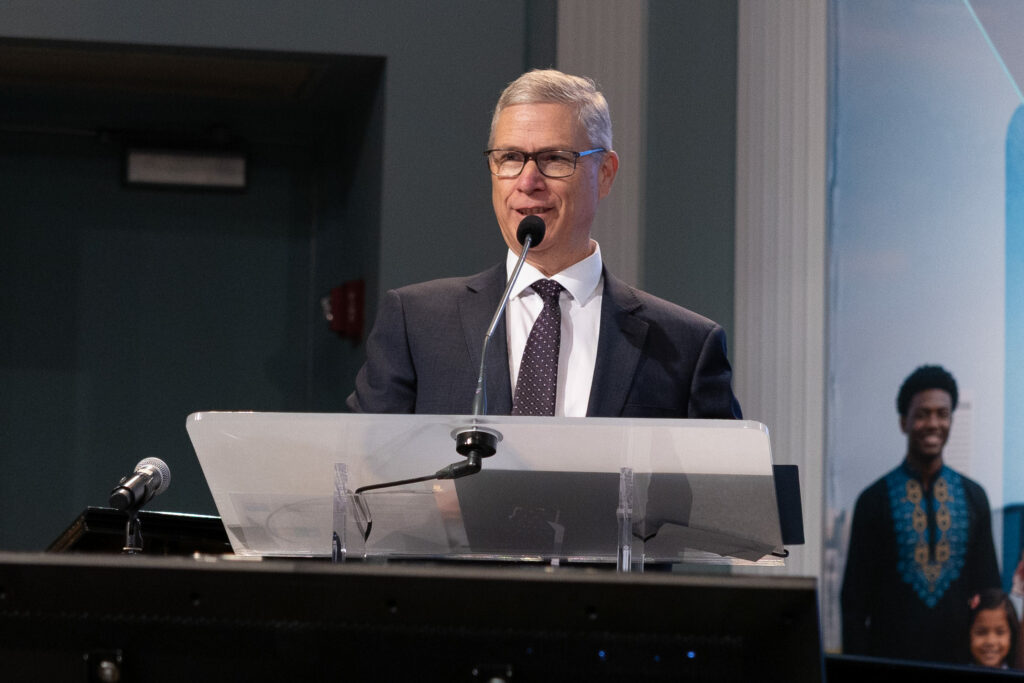
Rick McEdward, General Conference secretary, shares his report with the General Conference Executive Committee during the 2025 Annual Council held in Silver Spring, Maryland, United States. [Photo: Peterson Fagundes]
Growth Amid Ongoing Challenges
David Trim, director of the GC Office of Archives, Statistics, and Research, shared the latest membership figures and trends. While 1.887 million became Seventh-day Adventist members in 2024, almost 900,000, or more than 4 in 10 people, are slipping away, he reported. “In the past five years there was a total of 4,050,104 living losses,” he shared. “These are not statistics to celebrate . . . , but there is nevertheless grounds for a degree of satisfaction, in that membership reviews are taking place around the world . . . [and] we now have a more realistic picture of trends in membership.”
Trim mentioned that the world church continues to address the challenge. “But it is a challenge not only to the leaders gathered in this room but also to every church member—to every disciple of Jesus—to be their brother’s and sister’s keeper.”
There are other figures that show a clearer picture of current state and trends in membership, Trim said. These include population-to-member ratio, which went from 350 to 341 in the last year (a positive trend), and the number of accessions (new members) per congregation, which is currently at 10.4, with wide geographical variations. “Every territory in the world church has enjoyed growth. . . . But in some parts of the world that work of sharing is easier than in others,” he acknowledged.
After reviewing numbers, Trim shifted his focus away from them. “Counting baptisms and members is a means, not an end in itself,” he said. “It is a way to tell us how we are doing in reaching our greater goal of lifting Jesus.”
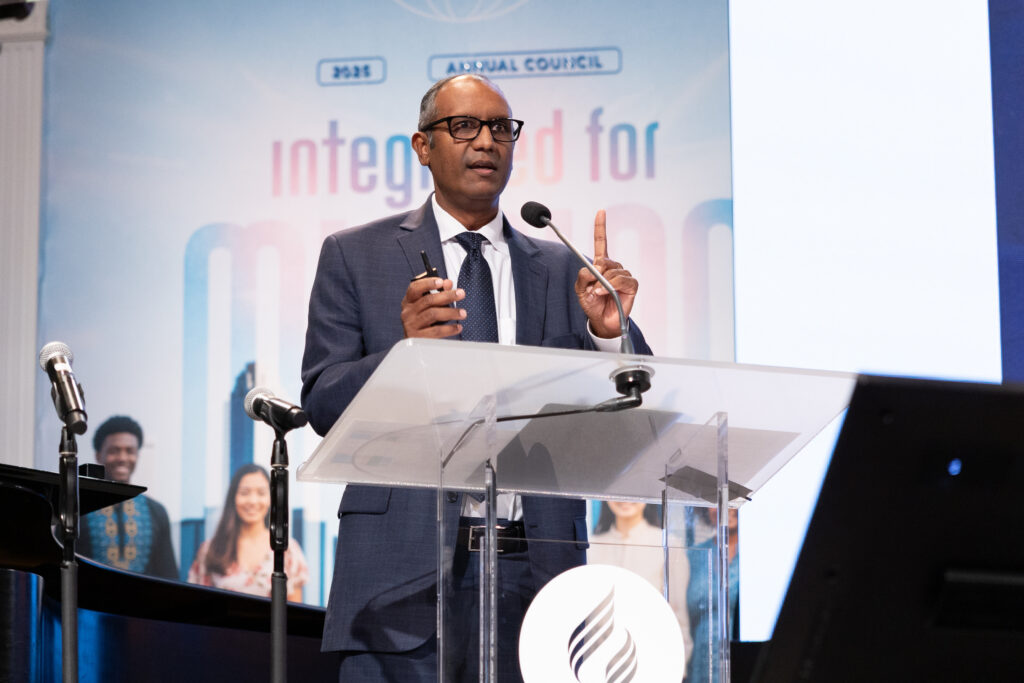
Hensley Moorooven, General Conference undersecretary, speaks during the 2025 Annual Council. [Photo: Peterson Fagundes]
Getting Willing People Ready for Mission
After Trim, Oscar Osindo, director of the Institute of World Mission (IWM), shared his report about the activities and accomplishments of what he called “the training arm of the General Conference Secretariat.” The institute prepares cross-cultural workers and nurtures missionary witness for effective service, he reminded GC EXCOM members.
During the past 12 months the four training sessions around the world equipped 118 adults and 67 children, emphasizing cross-cultural service and adaptation, Osindo reported. To assist those returning from missionary assignments, Osindo said, “three re-entry retreats provided much-needed debriefing and transition support to 73 adults and 29 children.”
According to Osindo, IWM also broadened its reach by offering webinars, podcasts, and training modules for Adventist volunteers and e-learning courses to serve missionaries around the world. “As we recognize the urgency of these times and the nearness of Christ’s return, we remain committed to cultivating mission vision, preparing cross-cultural workers, and nurturing missionary witness for effective service in God’s harvest,” he said.
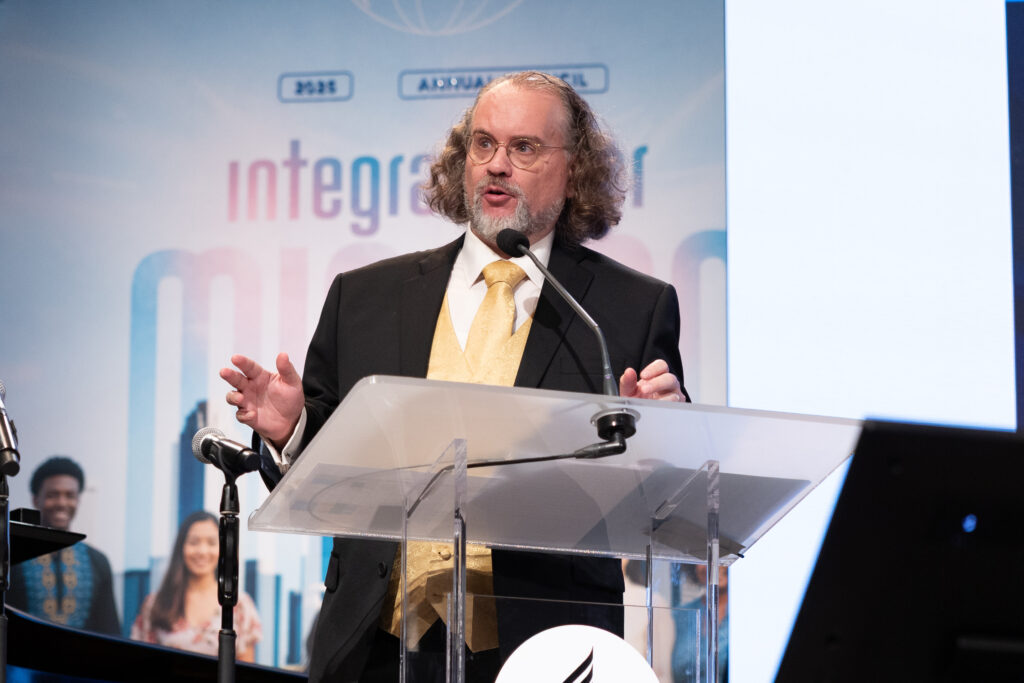
David Trim, director of the General Conference Office of Archives, Statistics, and Research, shares the latest membership figures and trends with members of the Executive Committee. [Photo: Peterson Fagundes]
The Power of Volunteer Service
Elbert Kuhn, director of Adventist Volunteer Service (AVS), followed Osindo with a report on what he called “the growth and expansion” of the office that manages the deployment of volunteers around the world.
Among the main achievements, Kuhn highlighted the growth of Schools of Mission, now with 296 schools active across the globe. “These mission centers provide both spiritual formation and practical training, preparing volunteers for service in education, health care, technology, church planting, media, and humanitarian outreach,” he said. “They have become true launchpads for mission.”
Kuhn also mentioned what he called “an encouraging trend,” as more volunteers become full-time missionaries. “Many who began with short-term service have now embraced lifelong mission, proving that volunteering is one of the strongest pipelines for long-term ministry,” Kuhn said.
The progress has not lacked challenges, Kuhn acknowledged. He mentioned political and logistical issues, including travel restrictions and immigration issues affecting international placement. But AVS managed to respond, he reported, “by strengthening intradivision opportunities [i.e., within the person’s own region] and opening doors for digital volunteering. Even when borders closed, mission did not stop,” Kuhn said.
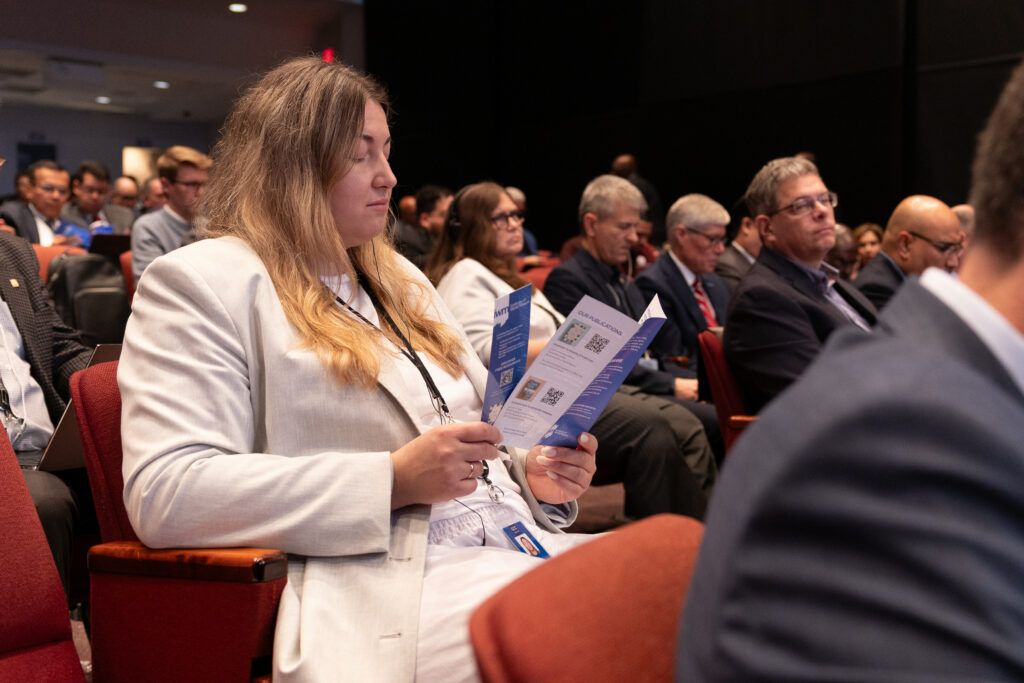
General Conference Executive Committee members receive Adventist Mission materials during the Secretariat’s report. [Photo: Peterson Fagundes]
Focus and Refocus on Mission
The Office of Adventist Mission is also part of the Secretariat team. Gary Krause, Adventist Mission director, reminded GC EXCOM members of Global Mission, the long-standing initiative of the world church to start new groups of believers in new and unentered areas and people groups through such means as Global Mission Pioneers, Global Mission Centers, Urban Centers of Influence, and others. He highlighted the Mission Refocus initiative to reach three high mission-challenge windows: the 10/40 window (the region of the world with most of the population but where Christians are a minority), the post-Christian window (mostly in the secular West) and the urban window (the large cities of the world).
Krause highlighted several of the available resources the office he leads has for increasing mission awareness, including such video resources as Mission Spotlight, a TV program, a magazine, mission quarterlies for local churches, and social media posts.
Then, Karen Porter, GC associate secretary, reported on the progress of Mission Refocus, which includes sending and receiving workers for the hardest to reach areas of the world and to channel resources to areas of the world where needed most. “Mission Refocus is not just a strategic shift; it’s a spiritual realignment,” Porter said. “It’s about being integrated for mission—intentionally aligning our people, our resources, and our vision with the places where the gospel is least known.”
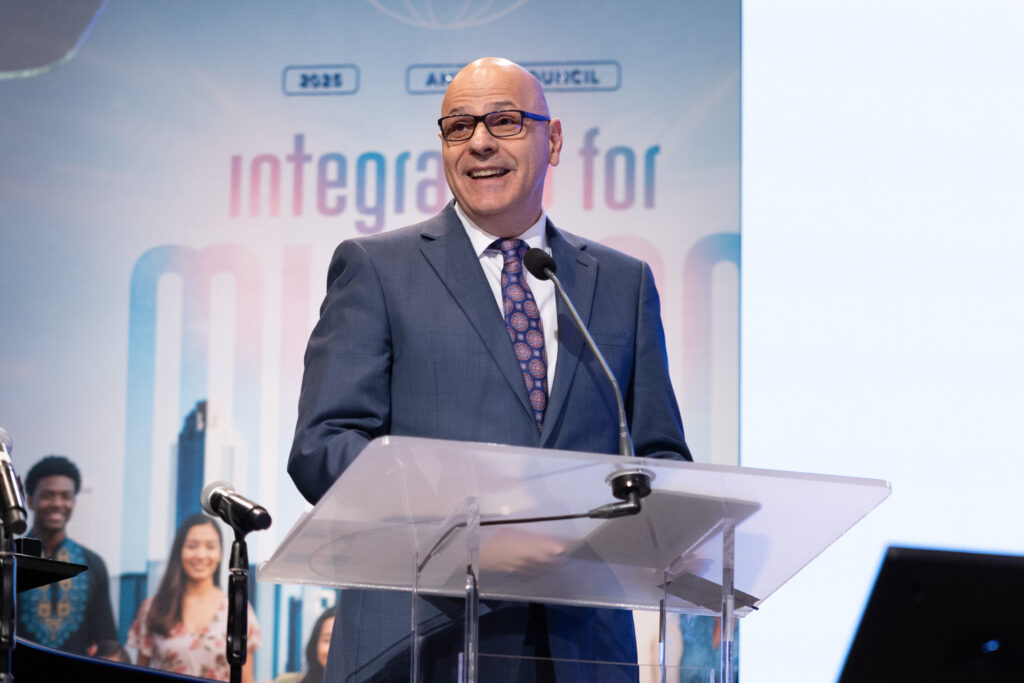
Elbert Kuhn, director of Adventist Volunteer Service, shares a report on the growth and expansion of the deployment of volunteers around the world. [Photo: Peterson Fagundes]
Focus on the 10/40 Window
In the second part of the Secretariat’s report, McEdward focused on the 10/40 window, which, he said, is an issue that “is not going away until Jesus comes.” The magnitude of the mission challenges across that region is staggering, McEdward explained. “It contains 69 countries and 66 percent of world population, or 5.4 billion people, against 2.8 billion people in the rest of the world.”
Adventist members in the 10/40 window amount to only 12 percent of the global Adventist membership, or 1 Adventist to 1,946 inhabitants, in contrast with 1 Adventist to just 135 people in the rest of the world, he shared. “It is also the region that contains 11 countries with no official Adventist presence,” he reported.
Another major challenge in the 10/40 window are large ethno-linguistic people groups that are nearly untouched by Christian outreach. There are approximately 200 million people in just five groups that have had a very limited in-person witness, if at all. “Let’s work together to identify to find ways for sharing God’s care in hard to reach areas,” McEdward urged.
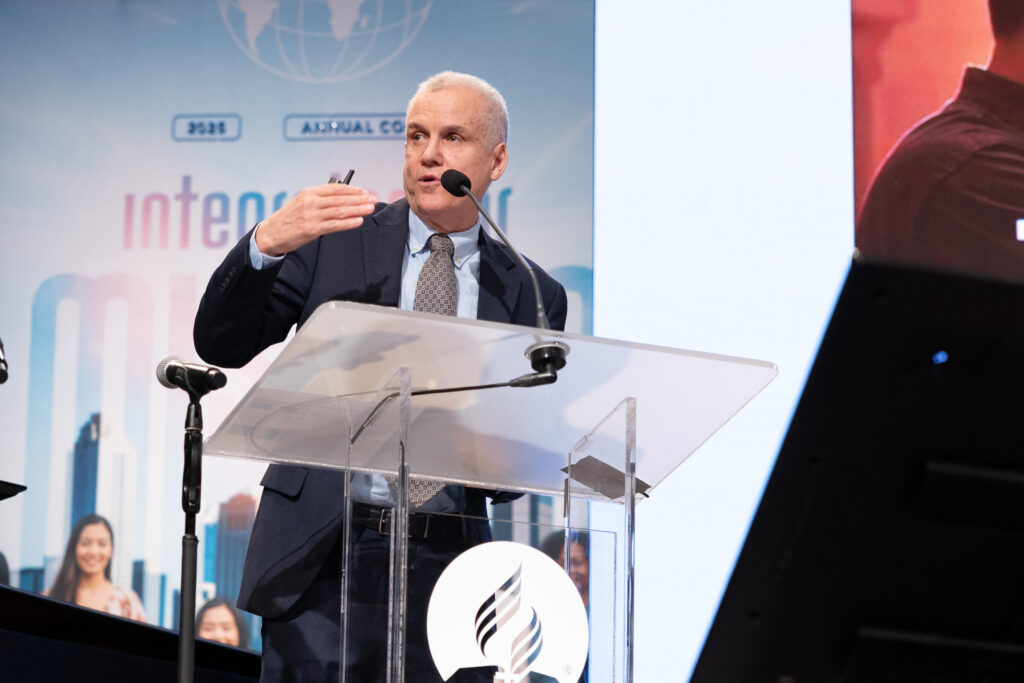
Gary Krause, Adventist Mission director, talks about Global Mission, which is a long-standing initiative of the world church to start new groups of believers in new and unentered areas and people groups through such means as Global Mission Pioneers, Global Mission Centers, Urban Centers of Influence, and others. [Photo: Peterson Fagundes]
Relationship With Islam
McEdward also explained that Muslims and Christians make up 55 percent of the world’s population. But Islam is growing faster and has a larger group of young people than Christianity. In some regions of Africa, both religions are expanding rapidly, sometimes in direct competition.
McEdward made a special point of the difficulty of sending workers into Muslim nations, because of various restrictions. “[The countries] are not easy for us to send workers to, but the fact that it is not easy doesn’t mean witness is impossible.”
Like Adventists, Muslims have mission outreach and have eschatological expectations. McEdward suggested that eschatology is an area where Adventists can be more open with Muslims. “As Adventists, eschatology is a major unused bridge to help Muslims understand us and our beliefs.”
He also explained that growing numbers of Muslims are engaging with the Bible through digital apps, social media, and personal encounters, often in private. To connect, however, Adventists need to move past five barriers, including fear, anger, hopelessness (in the outreach enterprise to Muslims), lack of knowledge about their language and culture, and lack of ministry tools.
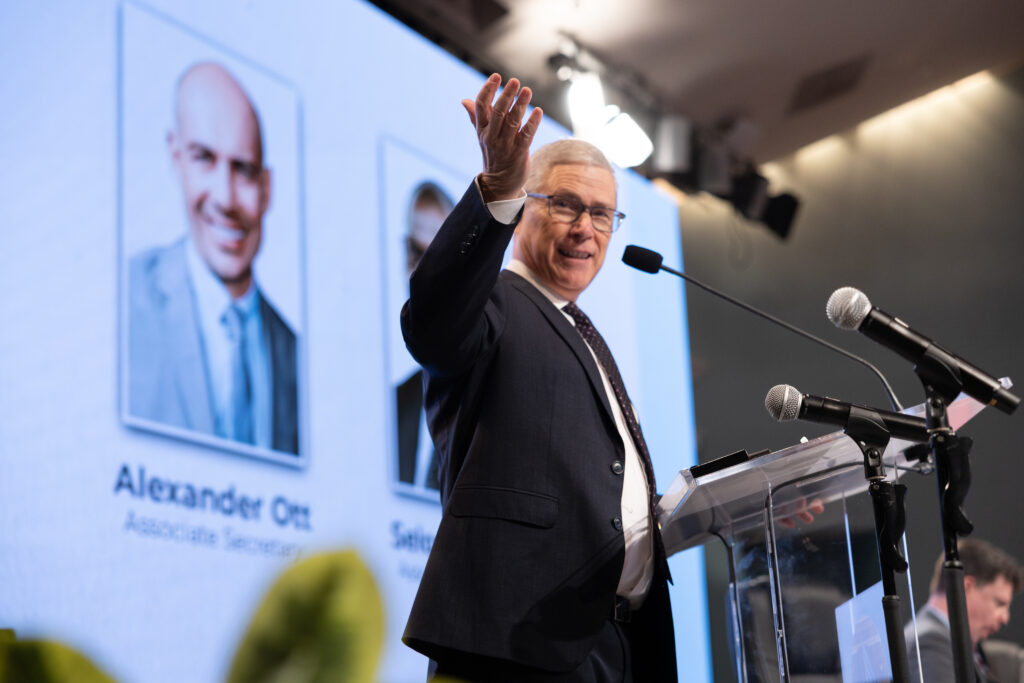
Hensley Moorooven, General Conference undersecretary, speaks during the 2025 Annual Council. [Photo: Peterson Fagundes]
Past and Present in Mission
McEdward also explained how the face of mission is changing thanks to Mission Refocus, a strategy “that is not going away” and “will continue to grow and get stronger, with your support,” he said. In fact, this new strategy “has resulted in the GC completely re-engineering the missionary sending process to strengthen sending frontline church planters into strategic locations globally,” McEdward reported. “In response, divisions have joined in sending workers to the three mission windows.”
He also reported that so far in 2025, the Adventist Church has sent 33 families, totaling 43 new employees, and 114 children to 21 countries. There are also “58 calls in the pipeline, with workers preparing to move to 33 countries, together with their 77 children, totaling about 310 people.
“Twenty-five years ago it was nearly impossible to find a mission call to do pioneering work,” McEdward shared. “Right now, however, Mission Refocus is helping the church sending church planters in the most unreached areas of the world,” something he considers an extremely positive trend. The hope is that now Mission Refocus be based on better mission intelligence, stronger strategic development, better alignment in mission, and best practices for missionary sending, he said.
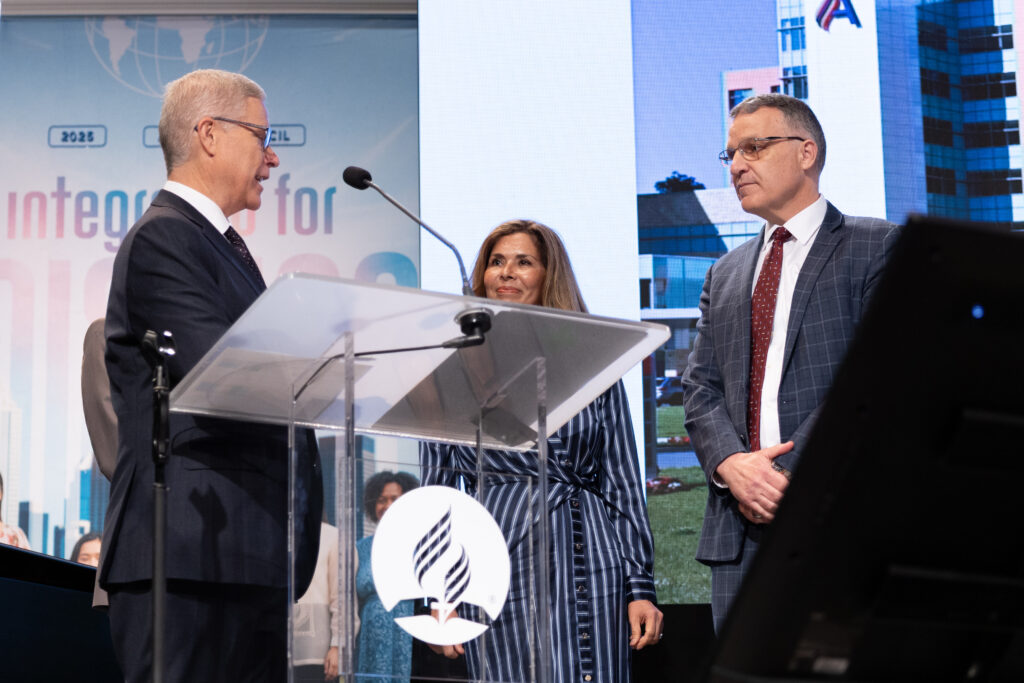
Rick McEdward introduces Anthony and Karina Stahl at the end of his report to the GC EXCOM members. Anthony Stahl, president of the Adventist HealthCare White Oak Medical Center in Silver Spring, Maryland, is a great-grandson of Ferdinand and Ana Stahl, who served as missionaries to Peru from 1909 to 1939. [Photo: Peterson Fagundes]
A Case Study
In the last part of the report, McEdward highlighted the example of Ferdinand and Ana Stahl, who were missionaries in Peru from 1909 to 1939. An old photo of the Stahls was used to create an AI-mediated video, during which, based on Ana’s diaries, the couple shared some of the memories of their experience as missionaries.
After the video McEdward introduced Anthony and Karina Stahl to the GC EXCOM members. Anthony Stahl, president of the Adventist HealthCare White Oak Medical Center in Silver Spring, Maryland, is a great-grandson of Ferdinand and Ana Stahl. “When I see [Ferdinand and Ana’s] faces, hear their voices, it brings the story alive,” Anthony Stahl acknowledged. “It just brings breadth into what they have done.”
Anthony Stahl shared with those present what an inspiration his grandparents are, because they “were just ordinary people who believed in an extraordinary God.” He added, “They longed with all their hearts for Jesus’ second coming, and . . . I want to continue in their footsteps, so it stirs that same feeling in my heart.”
McEdward closed by appealing to GC EXCOM members and others listening to the report to remember that Adventist mission is global. “[Our] mission extends all around the world, until Jesus comes.”